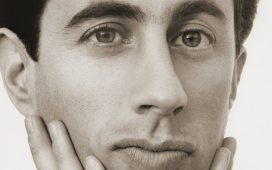We don’t traffic in rumors, but, if we did, there’d be plenty to choose from. If you were cruising the Internet last week, you may have come across an urgent appeal for information on the whereabouts of Kate Middleton, more formally known as Catherine, Princess of Wales. The British royal had not been seen since Christmas Day, when she attended a church service in Norfolk with her husband, Prince William, and their three children. The people demanded to know: Where is Kate? When no answer came, they made memes and bad jokes.
The answer to the question “Where is Kate?” has been made abundantly clear. On January 17th, Kensington Palace announced that she had been admitted to the London Clinic for “abdominal surgery” and would remain there for up to two weeks before continuing her recovery at home. “Based on the current medical advice,” the short statement read, “she is unlikely to return to public duties until after Easter.” Pointedly, there were no further details on Kate’s condition. The rest of the statement read like a slightly strained note from a scrupulously polite headmistress. “The Princess of Wales appreciates the interest this statement will generate. She hopes that the public will understand her desire to maintain as much normality for her children as possible; and her wish that her personal medical information remains private.” The palace would only provide updates, it said, “when there is significant new information to share.” No questions at this time, please!
In the absence of “significant new information,” the public has invented some. Last week, after William pulled out of a memorial service for his godfather, King Constantine II of Greece, citing personal reasons, speculation erupted. On X (previously Twitter), people joked that Kate hadn’t been seen for weeks because she was growing out disastrous curtain bangs. They wondered whether she had got lost at Willy’s Chocolate Experience, a farcical Willy Wonka-themed event that went wrong in Glasgow last month. There were theories about a Brazilian butt-lift, or B.B.L., which has a long recovery time. (On the Internet, all roads lead to the B.B.L.) Rumors spiralled into the outlandish. Had she pulled a “Gone Girl,” or run away in pursuit of a nomadic #vanlife? “Not a single Banksy since Kate Middleton disappeared. Coincidence?” one post read.
On Monday, things got worse. TMZ published what is apparently the first photo of Kate since her surgery, a grainy image that appeared to show the Princess and her mother, Carole Middleton, in a car. Kate is sitting upright in the passenger seat while her mother drives. She has on sunglasses, and her face, set softly in a neutral expression, is cast in shadow. The photo was obviously taken from a distance, and it was distributed by the celebrity news agency Backgrid. When it surfaced, most British news outlets declined to publish it. Americans had no such scruples. Almost immediately, people started posting about the image’s authenticity. “Was this picture of Kate Middleton made with a thousand photographs of Kate Middleton?” the comedian Laurie Kilmartin asked on X. The writer Sophie Ross tweeted, “Kate Middleton spotted for the first time since reported hospital stint,” above a notorious photo of Lindsay Lohan during her party era. Memes circulated of Michael Jackson in dark shades in the back of a car. Some users claimed that the woman in the photo could not possibly be Kate because she was missing a mole or two, or because her nose looked different. Perhaps it was her sister, Pippa? Or a wax figurine from Madame Tussauds?
It’s important to remember amid the frenzy that everything the palace has said would happen regarding Kate’s surgery has happened. The royal returned home on January 29th, almost two weeks after checking into the hospital, just as the palace said she would. She has stayed at home to recover since then, just as the palace said she would. At the time of her surgery, she announced that she would not be returning to public duty until “after Easter.” Easter is still a few weeks away. You could be forgiven for finding the confusion surrounding her absence puzzling. “It’s been kind of wild,” Elizabeth Holmes, an L.A.-based journalist who writes the newsletter “So Many Thoughts” and published a book on royal style, told me. “I heard last week from people in my life that do not follow the royals and are not clued in to this stuff. People are, like, ‘Wait, where’s Kate? What’s going on?’ And I was, like, ‘Well, she had surgery.’ ”
The fevered speculation about Kate’s health falls in the middle of a bleak winter for the Windsors. Last month, the palace announced that King Charles III would undergo treatment for an unspecified form of cancer. Another member of the family, Sarah, Duchess of York, revealed that she has malignant melanoma. Yet the king has made a point of being seen out and about—he has been spotted attending church in Sandringham and meeting with Prime Minister Rishi Sunak—while the princess has not. Kate’s absence is all the more stark because of how well, and how consistently, she has performed the role of a working royal over the years. Commentators have pointed out that she appeared on the steps of St. Mary’s Hospital for photographers just under seven hours after giving birth to Prince Louis. “For the most part of thirteen years, we’ve regularly seen this woman, and so the fact that we haven’t now is notable,” Holmes told me. “I think it speaks to her importance within the Royal Family.”
How much privacy can royalty expect these days? With fewer working royals, the importance of being seen has never felt more vital. The sociology lecturer Laura Clancy, whose work at Lancaster University revolves around media and the monarchy, has argued that, when a sovereign no longer rules by divine right, “media culture is the key site for the reproduction of public consent for monarchy’s power.” Being seen performing public duties—the ribbon-cutting, the hand-shaking—is a matter of survival for the Crown. Historically, the Royal Family has kept a tight hold on dealings with the public. Clancy told me that the British press has a “kind of reciprocal relationship” with the monarchy. “Royal correspondents, in particular—their whole job relies on a certain level of access,” she said. They want to remain within the fold. But the same cannot be said about individuals online, who never expected to receive an invite to the garden party anyway. Clancy also sees the current discourse around the monarchy as a kind of “post-Harry-and-Meghan mood.” “After everything they’ve said about the monarchy, there’s certainly a lot more criticism of it than there ever has been,” she said. It has not escaped notice, for instance, that the princess is being afforded a level of privacy by the British press that was not extended to Meghan, Duchess of Sussex.
The palace’s communications strategy around Kate’s surgery “would have worked fifty years ago,” Clancy told me. “But now, when news is so immediate and moves on so quickly, I don’t think that model works anymore.” She didn’t, however, find the palace’s response very surprising. “I’ve seen some commentary saying, ‘This is really weird. Why would they not release more information? Why would they not do that? It’s really suspicious.’ And, actually, I don’t think it is,” she said. “It’s pretty much in keeping with what they normally do; it’s just people are reacting differently. It’s business as usual for them. It’s just not panning out like it normally does.” ♦








